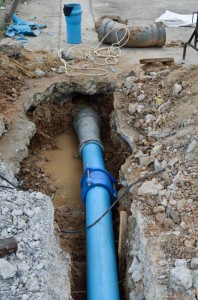The tweet below caught my attention this week. Every day, tweets are posted and articles written about the need for investment in water infrastructure. The numbers are staggering. The United States Environmental Protection Agency estimates that $384 Billion will be needed for drinking water infrastructure by 2030. The American Society of Civil Engineers assigns a D grade to both drinking water and wastewater infrastructure in the United States for the year 2013. (And that’s up from D-minuses for each in 2009). To me, the tweet tees up what’s required to truly explain our water infrastructure needs to the public: local leadership that isn’t afraid to transparently engage local people about water infrastructure.
UK post-true for US too MT @Waterbriefing: Disconnect b/w infrastructure needs+public concern http://t.co/UwMWvHvood pic.twitter.com/Gbkg6mQorb
— Brian Jordan (@jordanbrianl) April 15, 2022
Brian Jordan raises awareness of an important concept in his tweet. Elaine Coles’ original tweet links to a post that quotes a report on water infrastructure. By highlighting a quote about national economic data versus local economic impact, Jordan draws attention to the paradigm shift needed in the water infrastructure debate.
As the report notes, we often talk about water infrastructure needs on an abstract level, citing to facts and figures about the national economy. That approach can be effective to draw attention to the issue in general. It can be difficult to grasp from a local perspective, however. The broader message targets the need for general awareness about water infrastructure issues. It does nothing for specific, local infrastructure issues. Many people may not know that their own local water infrastructure is failing – it’s someone else’s infrastructure that needs to be replaced or upgraded.
We should also promote water infrastructure investment on a micro level, where the investment will be made. Admittedly, that’s a more difficult path because you not only need to know what’s needed on a local level, you need to have the leadership at that local level to engage with and educate the local people. A campaign can be mounted that demonstrates this need and that delivers more impact because it targets local people with information about the infrastructure that directly affects them.
John Entsminger in session 5 of The Water Values Podcast discussed this concept. When Las Vegas needed to upgrade its water infrastructure in the 1990’s, a citizens group convened to discuss it and establish a way to pay for the infrastructure. After the recession hit, the citizens group re-convened to adjust the rate design used to pay for the water infrastructure. In each case, local leadership engaged local people to find solutions tothe local infrastructure-related issues.
Here’s another example. I was involved several years ago with a water utility that needed a major capital project. The environmental regulator had issued an “Early Warning Letter” indicating that the treatment plant had exceeded 90% of its rated capacity for a certain number of months and that a plan was needed to remedy that situation.
The utility decided to expand the treatment plant and implement some other capital projects. All told, the rate increase projected to be over 50%. With strong leadership, the utility engaged its customers and undertook a campaign to educate residents and businesses about the need for the projects and the projected rate increase to pay for them. A key point in the public education campaign involved water’s role in economic development and the expansion of the local economy. The vote passed the city council unanimously. At a field hearing during the public utility commission rate case, only two people spoke. And both were in favor of the project and the rate increase to pay for it.
As the highlighted text in the tweet makes clear, investment in water infrastructure makes possible the expansion of the local economy. Water is a local issue, and that needs to be our approach when arguing for greater investment. Water utilities need to understand their infrastructure requirements and to have the leadership to engage with customers and transparently educate people about the need to upgrade water infrastructure. For water customers – take an interest in your local water utility and find out what its capital needs are. For water utilities – demonstrate leadership and transparently engage with your customers about your infrastructure needs. We’ll all be better off in the long run.
